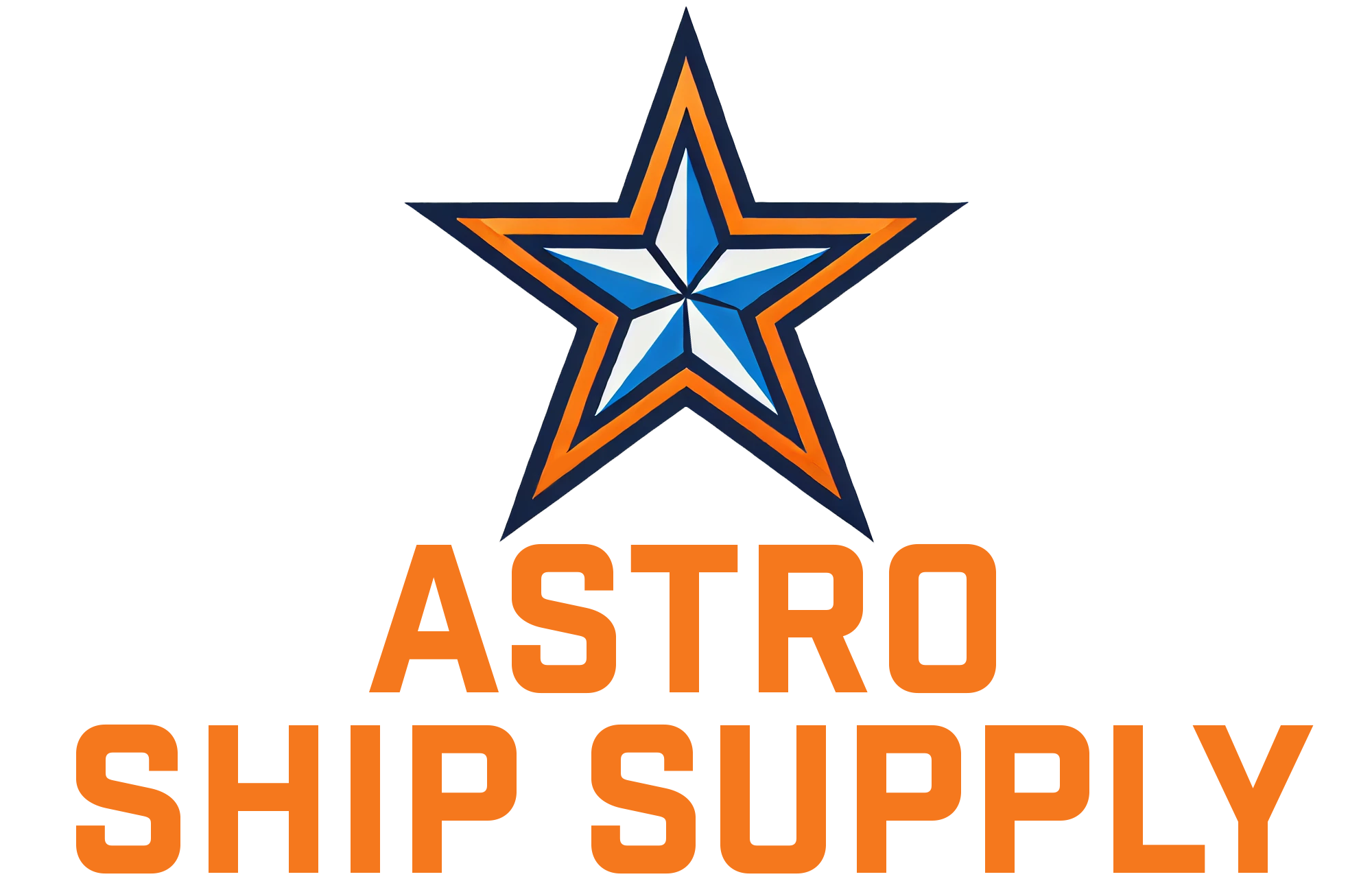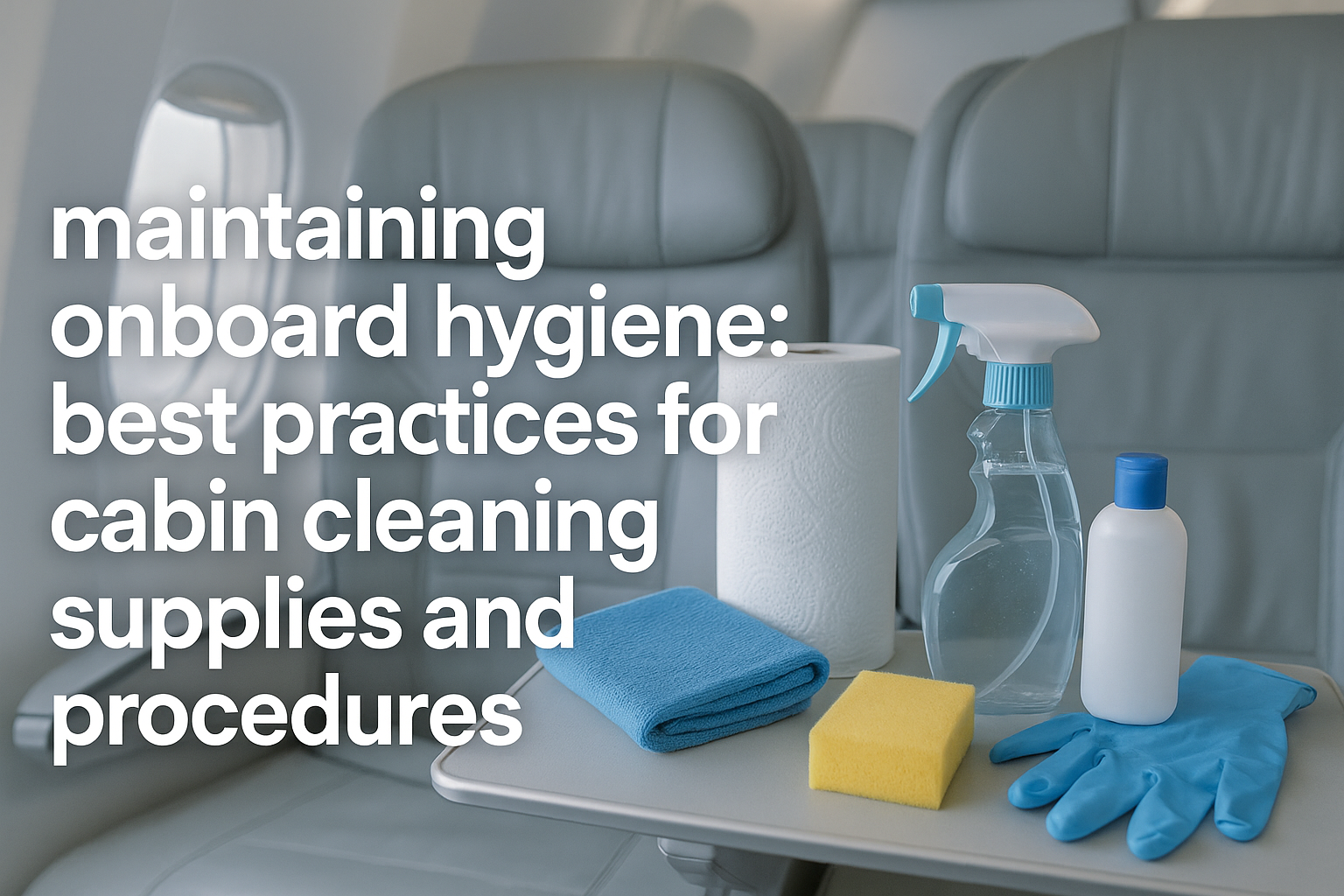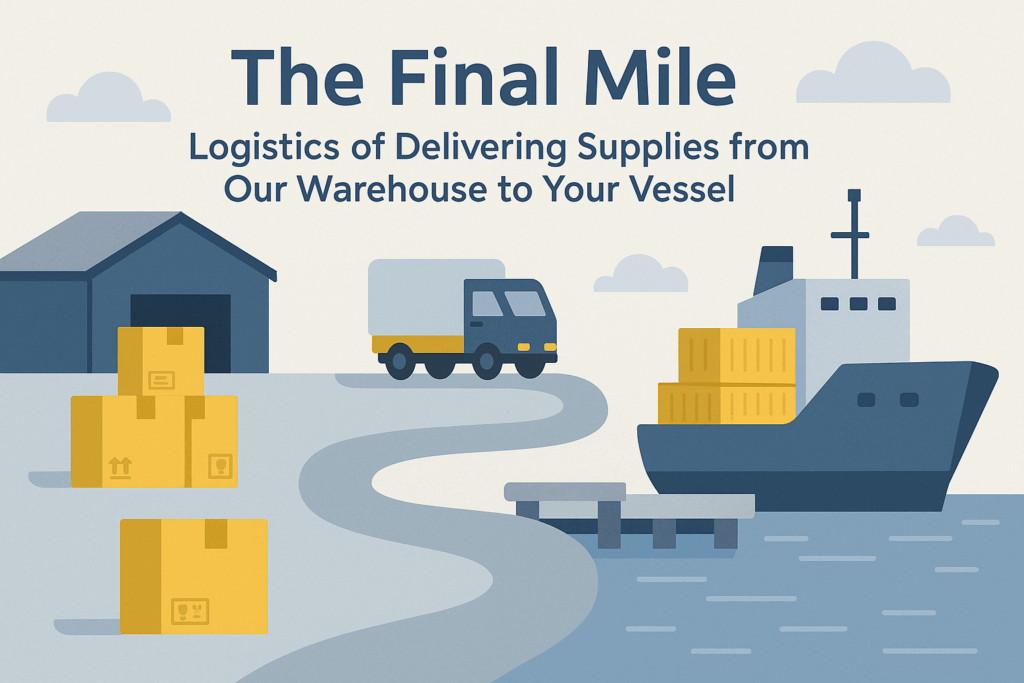—
The Unseen Impact: Why Onboard Hygiene Matters More Than You Think
The confined spaces and shared living conditions on a ship present unique challenges for hygiene. Neglecting these areas can lead to a cascade of problems, far beyond a messy cabin. Consider these critical impacts:
- Crew Health and Well-being: A clean cabin directly contributes to the physical and mental health of the crew. Unhygienic conditions can foster the spread of illnesses, leading to sick crew members, reduced productivity, and potential delays. Conversely, a clean, comfortable living space promotes rest, reduces stress, and boosts morale.
- Regulatory Compliance: International maritime organizations and national authorities have strict regulations regarding hygiene and sanitation on vessels. Non-compliance can result in hefty fines, detention, and reputational damage.
- Vessel Longevity and Maintenance: Accumulation of dirt, grime, and moisture can lead to corrosion, mold growth, and damage to ship structures and equipment over time. Regular cleaning helps preserve the vessel’s integrity and reduces long-term maintenance costs.
- Inspection Readiness: Ships are subject to frequent inspections by port state control, classification societies, and other authorities. A well-maintained and hygienic vessel creates a positive impression and minimizes the risk of deficiencies.
- Operational Efficiency: A healthy and motivated crew, working in a clean environment, is a productive crew. Reduced instances of illness and improved morale directly translate to smoother operations and fewer disruptions.
—
Essential Cabin Cleaning Supplies: Building Your Arsenal for Impeccable Hygiene
Effective cabin cleaning begins with the right tools and supplies. A well-stocked inventory ensures that your crew has everything they need to tackle any cleaning challenge. Here’s a breakdown of must-have items, often available through trusted ship chandlery services like Astro Ship Supply:
General Cleaning Agents: The Workhorses of Hygiene
- All-Purpose Cleaner: A versatile solution for surfaces, walls, and general wipe-downs. Look for concentrated, marine-grade options that are effective yet safe for various materials.
- Disinfectants: Crucial for killing germs, bacteria, and viruses, especially in high-touch areas like doorknobs, light switches, and bathroom fixtures. Choose products certified for maritime use and consider their broad-spectrum efficacy.
- Degreasers: Essential for galley areas and any surfaces prone to grease buildup.
- Glass Cleaner: For streak-free windows, mirrors, and other glass surfaces, contributing to a brighter and more inviting space.
- Floor Cleaners: Depending on the flooring type (e.g., vinyl, rubber, linoleum), specific cleaners are needed to maintain cleanliness and prevent damage.
Specialized Cleaning Tools and Equipment: Enhancing Efficiency
- Microfiber Cloths: Highly absorbent and effective for capturing dust, dirt, and spills without leaving streaks. Color-code them for different areas (e.g., blue for general surfaces, red for sanitary areas) to prevent cross-contamination.
- Sponges and Scourers: For tougher stains and grime, ensuring thorough cleaning without scratching surfaces.
- Brushes (various sizes): From utility brushes for floors to smaller brushes for crevices and grout lines.
- Buckets: For mixing cleaning solutions and rinsing. Always use separate buckets for cleaning and rinsing to avoid spreading dirt.
- Mops (flat and string): Depending on the area and floor type. Flat mops are excellent for quick clean-ups, while string mops are better for larger areas.
- Vacuum Cleaner: A powerful, marine-grade vacuum with attachments for carpets, upholstery, and tight spaces is indispensable for removing dust, crumbs, and debris.
- Trash Bags: Durable bags for waste disposal, essential for maintaining a tidy environment.
- Personal Protective Equipment (PPE): Gloves, safety glasses, and, if necessary, masks, to protect crew members from chemical exposure and potential hazards.
Comparison of Cleaning Product Types: Choosing Wisely
When selecting cleaning supplies, it’s important to consider various factors beyond just effectiveness. Here’s a comparative analysis:
| Product Type | Pros | Cons | Best Use Cases |
|---|---|---|---|
| Concentrated Cleaners | Cost-effective, less storage space, reduced plastic waste. | Requires careful dilution, potential for misuse if not properly trained. | Large vessels, long voyages, general cleaning of multiple surfaces. |
| Ready-to-Use (RTU) Cleaners | Convenient, no dilution needed, easy to use. | Higher cost per use, more storage space, increased plastic waste. | Smaller vessels, quick touch-ups, specific tasks requiring precise application. |
| Eco-Friendly/Biodegradable Cleaners | Reduced environmental impact, safer for crew, less harsh chemicals. | May be less potent for heavy-duty cleaning, potentially higher cost. | All vessels, especially those prioritizing environmental responsibility. |
| Disinfectant Wipes | Extremely convenient for quick sanitization, no spray or cloth needed. | Can be expensive for large areas, generate more waste, not ideal for heavily soiled surfaces. | High-touch surfaces, quick clean-ups, individual cabin use. |
—
Best Practices for Cabin Cleaning Procedures: A Step-by-Step Approach
A systematic approach to cabin cleaning ensures thoroughness and efficiency. While routines may vary slightly based on vessel type and crew size, these core principles apply:
Daily Routine: Maintaining Continual Cleanliness
- Tidy Up: Encourage crew members to make their beds, put away personal items, and ensure clear walkways.
- Empty Trash Bins: Regularly empty and replace liners in all cabin and common area bins.
- Quick Wipe-Downs: Use a damp cloth with all-purpose cleaner to wipe down frequently touched surfaces like desks, nightstands, and light switches.
- Floor Sweep/Vacuum (as needed): Address any visible dirt or crumbs to prevent accumulation.
Weekly Deep Clean: Addressing All Corners
- Ventilation: Open windows and doors (if sea conditions permit) to air out the cabins and promote fresh air circulation.
- Dusting: Dust all surfaces, including shelves, ledges, and electronics, using a microfiber cloth. Start from top to bottom to ensure dust falls onto areas yet to be cleaned.
- Vacuuming/Mopping: Thoroughly vacuum all carpets and upholstery, and mop hard floors with an appropriate cleaner. Pay attention to corners and under furniture.
- Surface Cleaning and Disinfection:
- Wipe down all hard surfaces (desks, tables, wardrobes, walls) with an all-purpose cleaner, followed by a disinfectant, particularly on high-touch areas.
- Clean and disinfect door handles, light switches, and remote controls.
- Bathroom Sanitation:
- Clean and disinfect toilets, sinks, showers, and bathroom floors using appropriate bathroom cleaners and disinfectants.
- Replenish toiletries if applicable.
- Linens and Towels: Change bed linens and towels regularly, ensuring they are sent for proper laundering.
- Waste Management: Ensure all waste is properly sorted and disposed of according to vessel regulations.
Periodic Tasks: Specialized Cleaning and Maintenance
- Window Cleaning: Periodically clean cabin windows inside and out for optimal visibility and appearance.
- Curtain/Blind Cleaning: Vacuum or spot clean curtains/blinds to remove dust and allergens.
- Upholstery Cleaning: Periodically deep clean fabric upholstery to remove embedded dirt and odors.
- Ventilation System Cleaning: Regularly clean and inspect air conditioning vents and filters to ensure good air quality and prevent mold growth.
- Pest Control: Implement a proactive pest control program to prevent infestations.
—
Case Studies: Real-World Scenarios and Solutions
Case Study 1: Mitigating a Norovirus Outbreak
Scenario: A large cargo vessel on a month-long voyage experiences a suspected norovirus outbreak among its crew. Several crew members report gastrointestinal symptoms.
Solution: The vessel’s master immediately initiates enhanced hygiene protocols. This includes:
- Isolation: Affected crew members are isolated in their cabins, with strict instructions to minimize contact.
- Intensive Disinfection: All common areas, especially galleys, mess halls, and shared bathrooms, undergo rigorous disinfection using hospital-grade disinfectants. High-touch surfaces are disinfected multiple times daily.
- Personal Hygiene Reinforcement: Handwashing with soap and water is heavily emphasized, and hand sanitizers are made readily available.
- Cabin Deep Clean: Every cabin, especially those of affected individuals, undergoes a thorough deep clean and disinfection after symptoms subside. All linens are professionally laundered at high temperatures.
Outcome: Through aggressive disinfection and strict adherence to hygiene protocols, the outbreak is contained, preventing further spread and allowing the vessel to continue its voyage with minimal disruption.
Case Study 2: Preventing Mold Growth in Tropical Climates
Scenario: A research vessel operating primarily in humid, tropical waters consistently battles with mold growth in crew cabins, leading to unpleasant odors and potential health concerns.
Solution: The crew implements a multi-pronged approach:
- Improved Ventilation: Regular airing of cabins when possible, and increasing the frequency of air conditioning filter cleaning and replacement. Dehumidifiers are installed in particularly damp cabins.
- Moisture Control: Crew members are instructed to promptly wipe down any condensation on surfaces, especially around windows and in bathrooms. Wet towels are not left hanging to dry inside cabins.
- Antifungal Cleaners: Regular use of cleaning solutions with antifungal properties on surfaces prone to mold.
- Fabric Treatment: Upholstery and curtains are treated with mold-resistant sprays during periodic deep cleans.
Outcome: Significant reduction in mold growth, leading to improved air quality, elimination of odors, and a healthier living environment for the crew.
—
Long-Term Strategies: Cultivating a Culture of Cleanliness
Beyond daily and weekly routines, fostering a proactive approach to hygiene is key. This involves:
- Regular Training: Educating crew members on proper cleaning techniques, the safe handling of cleaning chemicals, and the importance of personal hygiene.
- Scheduled Maintenance: Implementing a schedule for cleaning and inspecting ventilation systems, plumbing, and other infrastructure that impacts cabin hygiene.
- Quality Supply Management: Partnering with reliable ship chandlers like Astro Ship Supply ensures consistent access to high-quality, marine-grade cleaning supplies and provisions. This minimizes supply chain disruptions and guarantees the effectiveness of your hygiene efforts.
- Feedback and Adaptation: Regularly solicit feedback from the crew regarding cabin conditions and cleaning processes. Adapt procedures as needed to address new challenges or improve efficiency.
—
Partnering for Peak Performance: The Role of Ship Chandlery
The success of your onboard hygiene program heavily relies on a consistent supply of quality products. This is where a reliable ship chandler becomes an invaluable partner. Services offered by companies like Astro Ship Supply include:
- Comprehensive Range: Providing a wide array of cabin supplies, from cleaning agents and disinfectants to linens, toiletries, and general accommodation necessities.
- Quality Assurance: Ensuring that all products meet stringent maritime standards and are safe for onboard use. Many suppliers, like Astro Ship Supply, adhere to certifications such as ISO 9001:2015 for quality management and HACCP for food safety, extending these high standards to all provisions and supplies.
- Timely Delivery: Crucial for maintaining continuous operations and preventing shortages, especially in busy ports like Houston and across the Gulf Coast region.
- Customized Solutions: Tailoring supply packages to meet the specific needs and budget of each vessel.
- 24/7 Support: Offering continuous support to address urgent requests or unexpected needs, reflecting a commitment to client success.
—
Frequently Asked Questions (FAQ) About Onboard Cabin Hygiene
What are the most common hygiene challenges on a ship?
Common challenges include limited space, high humidity leading to mold, rapid spread of germs due to close living quarters, waste management, and consistent access to quality cleaning supplies. Effective ventilation and proper waste disposal are key to overcoming these.
How often should crew cabins be cleaned?
Daily tidying and spot cleaning are recommended for general maintenance. A thorough deep clean of cabins and common accommodation areas should be performed weekly to ensure comprehensive sanitation. Periodic tasks like vent cleaning and upholstery treatment should be scheduled quarterly or bi-annually, depending on usage and climate.
Are there specific regulations for ship hygiene?
Yes, various international and national regulations govern ship hygiene. The International Maritime Organization (IMO) provides guidelines, and specific port state control authorities enforce their own standards. Compliance with the International Ship and Port Facility Security (ISPS) Code, while primarily security-focused, often intersects with overall ship management and cleanliness expectations. Additionally, food safety (HACCP) and quality management (ISO 9001:2015) certifications are vital for comprehensive operational excellence, including hygiene.
Can I use regular household cleaning products onboard?
While some household products might seem suitable, it’s generally recommended to use marine-grade cleaning supplies. These products are formulated to be effective in maritime environments, consider potential impacts on ship materials, and often comply with specific safety and environmental regulations for onboard use. Always consult with your ship chandler or safety officer.
How does onboard hygiene impact crew morale?
A clean and comfortable living environment significantly boosts crew morale. It demonstrates care for their well-being, reduces stress, promotes better sleep, and can contribute to a more positive and productive atmosphere. Conversely, unhygienic conditions can lead to discomfort, illness, and a decline in morale.
—
Conclusion: Setting Sail with Superior Standards
In the intricate ecosystem of maritime operations, onboard hygiene is not an ancillary task; it’s a critical component of safety, efficiency, and crew welfare. By understanding the essential supplies, adhering to best practices in cleaning procedures, and fostering a culture of cleanliness, vessels can ensure a healthy, comfortable, and productive environment for everyone onboard. Partnering with a reputable ship chandler like Astro Ship Supply, with their commitment to quality, compliance, and timely delivery, empowers vessels to navigate the seas with confidence, knowing their hygiene standards are as high as their operational excellence. Prioritizing cabin cleanliness is an investment that pays dividends in crew health, regulatory compliance, and the long-term success of your maritime ventures.






